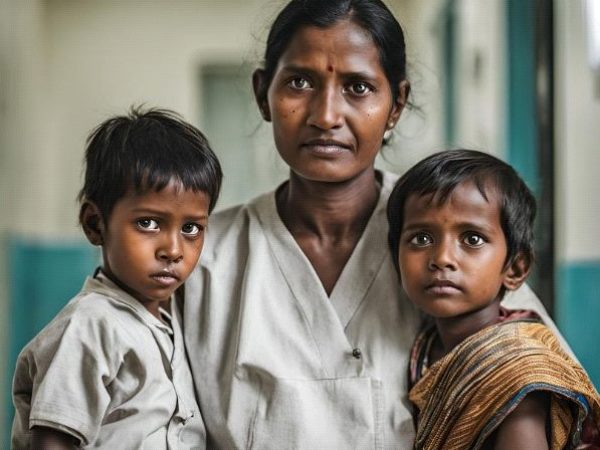The Importance of Regular Eye Exams in Children: Detecting & Preventing Vision Problems
Many parents assume that if their child isn’t complaining about their vision, their eyesight must be fine. However, several eye conditions in children develop silently, only becoming noticeable when they have already caused significant damage. Regular eye exams play a crucial role in early detection and intervention, ensuring that children develop healthy vision and avoid complications that could impact their learning and daily life.
A Wake-Up Call: How an Eye Exam Changed a Child’s Future
A worried mother brought her two children to our clinic for a routine eye check-up. While one child had perfect vision, the other was diagnosed with lazy eye (amblyopia)—a condition where the brain favors one eye over the other. Since it was detected early, corrective treatment was started immediately, significantly improving the child’s vision. Without early intervention, this could have led to permanent vision impairment.
This case highlights why regular eye exams are essential—many vision problems show no obvious signs but can have long-term consequences if left untreated.

Common Childhood Eye Conditions That Require Early Detection
1. Lazy Eye (Amblyopia): The Silent Vision Thief
Amblyopia occurs when one eye does not develop proper visual function due to misalignment (strabismus) or a difference in prescription between the two eyes. Early detection—typically before age 7—is crucial, as treatment becomes less effective as the child gets older. Treatment includes patching the stronger eye, prescription glasses, or vision therapy.
https://www.aao.org/eye-health/tips-prevention/common-childhood-diseases-conditions

2. Keratoconus: A Progressive Condition That Affects the Cornea
Keratoconus is a condition where the cornea gradually thins and bulges outward, leading to distorted vision. Often diagnosed in adolescence, it can be managed with specialty contact lenses, corneal cross-linking, or in severe cases, corneal transplant. Early detection can prevent worsening vision loss.



3. Refractive Errors: More Than Just Needing Glasses
Children may have myopia (nearsightedness), hyperopia (farsightedness), or astigmatism, which, if uncorrected, can lead to difficulties in learning and reading. Regular check-ups ensure the right prescription and proper vision development.
4. Eye Allergies: Redness, Itching, and Discomfort
Eye allergies are often mistaken for common irritations but can cause chronic inflammation, watery eyes, and blurred vision. If untreated, severe cases can lead to corneal damage. Early identification and management with antihistamines, lubricating eye drops, or environmental control can help.
5. Strabismus (Crossed Eyes): More Than a Cosmetic Concern
Strabismus is when one eye turns inward, outward, upward, or downward, leading to poor depth perception and possible vision suppression in one eye. If diagnosed early, treatment with glasses, patching, or surgery can align the eyes properly.
Why Routine Eye Exams Matter
- Early detection can prevent permanent vision loss and improve treatment outcomes.
- Undiagnosed vision problems can affect a child’s academic performance and confidence.
- Pediatric eye exams go beyond simple vision screening and can detect hidden issues.
- Conditions like amblyopia or keratoconus are best treated early when the eye is still developing.
When Should Children Have Eye Exams?
- At 6 months (initial screening)
- At 3 years (preschool check-up)
- Before starting school (around age 5-6)
- https://www.aoa.org/healthy-eyes/eye-health-for-life/preschool-vision?sso=y
Final Thoughts
Regular eye exams are a simple yet powerful way to safeguard a child’s vision and overall development. If your child hasn’t had an eye check-up recently, now is the perfect time to schedule one.
Don’t wait until symptoms appear—early intervention can change lives. Book an eye exam today!
Experience The

